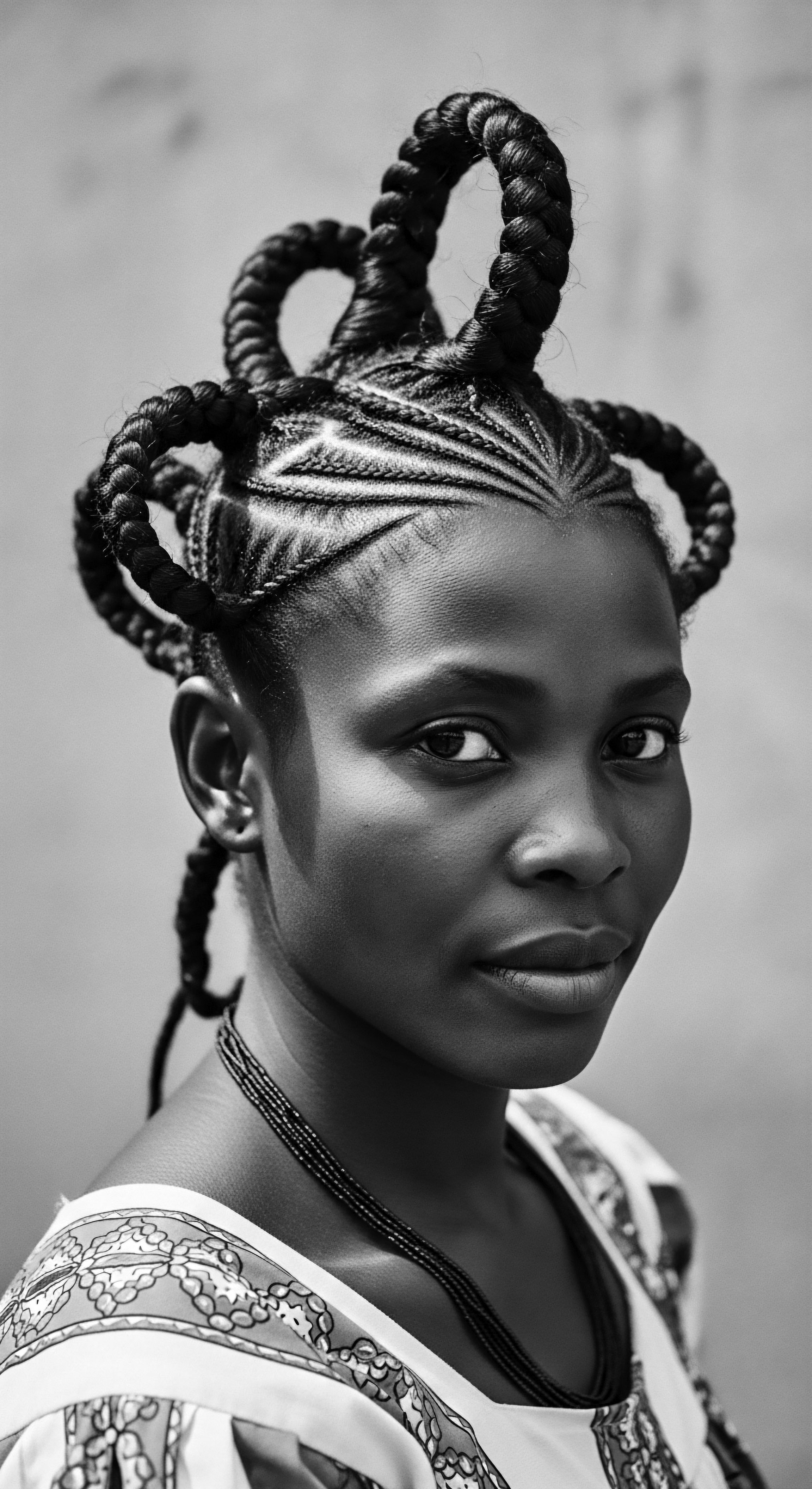
Roots
There are echoes in every curl, every coil, every strand of our textured hair—whispers of generations, stories of resilience, and the indelible mark of heritage. Our hair, a living archive, tells tales of sun-drenched savannas, arduous journeys, and the unwavering spirit of those who came before us. Understanding its innate architecture, its wondrous ability to spiral and gather, is a homecoming of sorts. It’s a return to the wellspring of wisdom that affirms its intrinsic beauty and strength, before the interventions of tools, before the introduction of fire-heated metal upon its surface.
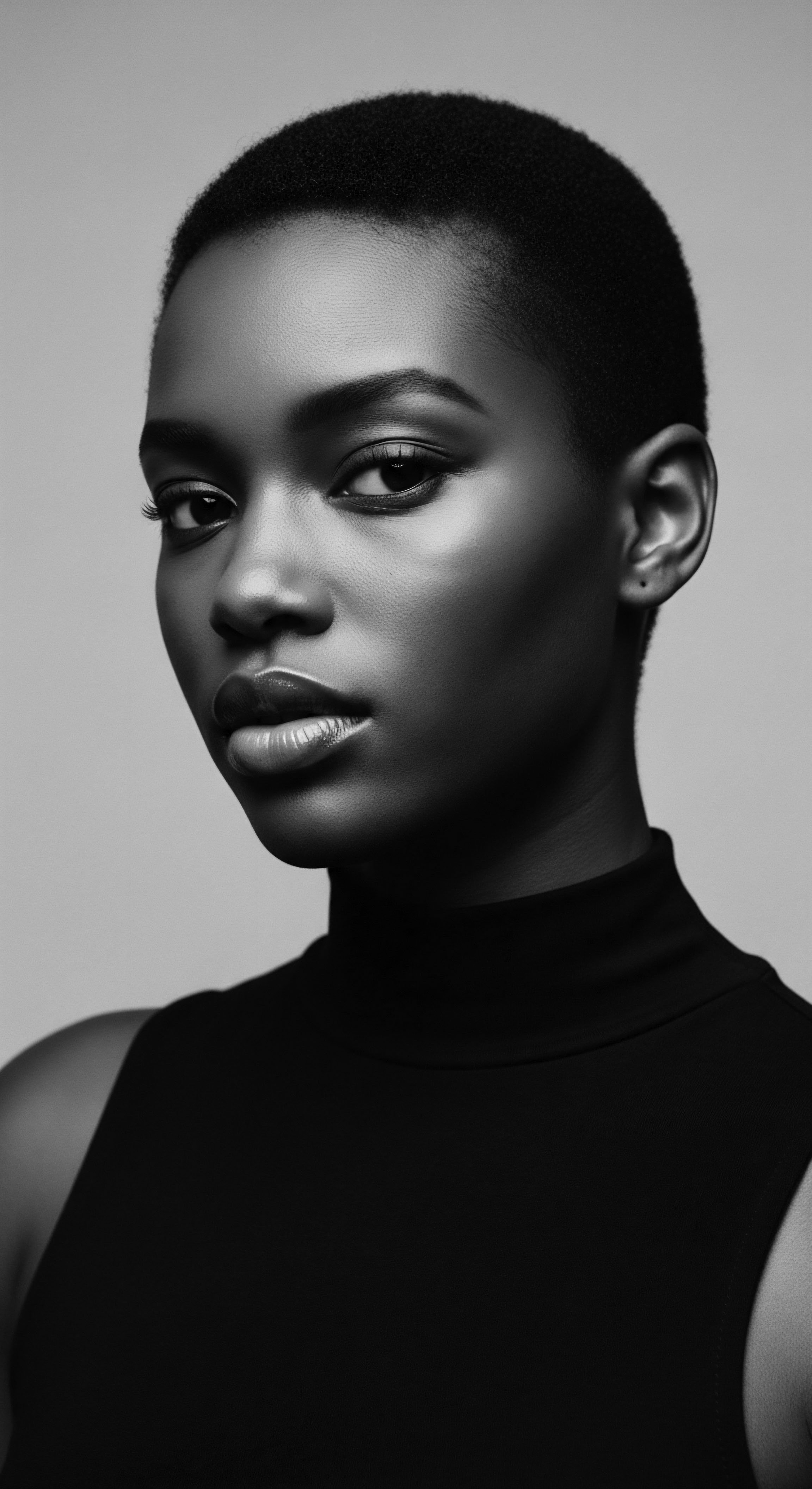
The Ancestral Weave of Hair Anatomy
To truly grasp how the hot comb, a seemingly simple device, left its impression upon the very fabric of our textured hair, we must first recognize the hair in its original, vibrant state. Imagine a single strand, born from a follicle nestled deep within the scalp, a tiny factory of creation. For textured hair, this follicle is often elliptically shaped, a subtle variance that governs the curl’s tight, spring-like formation. This shape dictates the angle at which the hair emerges, compelling it to twist and turn, creating its remarkable volume and unique patterns.
The cuticle, the hair’s outermost protective layer, consists of overlapping scales, akin to shingles on a roof. On a straight strand, these scales lie relatively flat. On a highly coiled strand, however, they lift more readily, contributing to both its glorious volume and its predisposition to moisture loss, a fundamental aspect of its ancestral biology. The cortex, beneath the cuticle, holds the hair’s essential structure, its strength, and its color, a blend of proteins, primarily keratin , sculpted into intricate fibrils.
Within the cortex, disulfide bonds form between sulfur atoms in keratin, acting as tiny internal anchors that set the hair’s natural curvature. These bonds are the architects of a curl, and they hold the secret to understanding the hot comb’s profound transformative ability. For centuries, our forebears understood these qualities not through molecular diagrams, but through intimate, lived experience—the way a curl bounced back, the way it absorbed oils from the earth, the way it spoke of ancestral lineage. They styled not to conquer, but to honor.
The hair of our ancestors, shaped by elliptical follicles, bore unique cuticle patterns and resilient keratin bonds, dictating its innate, beautiful coil.

Early Interventions And The Shifting Canvas
Before the advent of manufactured hot combs, various methods were employed across the diaspora to lengthen or smooth hair. These were often rudimentary, born of necessity and ingenuity. Think of smooth stones warmed by fire, or simple metal instruments heated and applied with careful hands, sometimes with oils or butters as protective barriers. These practices, though varied, spoke to a consistent desire for malleability, for new forms of expression.
They emerged from a complex interplay of cultural aesthetic, social pressures, and practicality. The hot comb, as it evolved, represented a more efficient, standardized application of this thermal impulse, but its underlying objective was rooted in a very old tradition ❉ altering the outward presentation of texture, sometimes to fit into prevailing beauty ideals, sometimes to denote status, sometimes for ease of management. The very act of heat application, however, introduced a new dimension to this age-old quest, one that began to reshape the hair at a foundational level.
| Traditional Tool/Method Warmed Stones/Metal Rods |
| Purpose and Heritage Context Used by some West African groups for smoothing or stretching, often with natural emollients. A practice of selective alteration for specific styles or ceremonies. |
| Hot Comb's Analogous Action Applies direct, conductive heat to the hair shaft, albeit with greater intensity and surface area. |
| Traditional Tool/Method Clay or Mud Treatments |
| Purpose and Heritage Context Historical use for both cleansing and temporary straightening/elongation in certain indigenous communities, creating a protective sheath that could be smoothed. |
| Hot Comb's Analogous Action While chemical, shares the goal of temporarily altering strand shape, a core desire across heritage practices. |
| Traditional Tool/Method Heavy Braiding/Tension |
| Purpose and Heritage Context A universal ancestral method to stretch and elongate coils, preparing hair for easier manipulation or reducing shrinkage. |
| Hot Comb's Analogous Action Mechanically elongates the hair, but without the chemical bond alteration of direct heat. |
| Traditional Tool/Method These early methods, though distinct from the hot comb, illustrate a long-standing heritage of seeking hair malleability for diverse purposes. |

Ritual
The application of a heated comb to textured hair became a ritual for many—a weekly, bi-weekly, or special occasion practice steeped in both personal care and societal expectation. This ritual, particularly in Black communities, carried layers of meaning that transcended mere styling. It spoke of adaptation, aspiration, and sometimes, a quiet defiance within a world that often demanded conformity.
The transformation itself, the way a tight curl would yield and lengthen under the comb’s heated caress, was a moment of profound physical and often emotional impact. This was the moment the hot comb truly began its work on the hair’s fundamental structure.

The Science of Softening Hair’s Helix
When the teeth of a heated hot comb passed through a strand of textured hair, two primary forces came into vigorous play ❉ heat and tension . The heat, delivered conductively from the metal, acted as an energetic catalyst. Hair’s primary structural protein, keratin, exists in a coiled alpha-helix configuration, stabilized by hydrogen bonds, salt bonds, and those robust disulfide bonds mentioned earlier. Hydrogen bonds, being weaker and more susceptible to water, are easily broken by the application of heat.
As the hair is heated, water molecules within the hair shaft begin to evaporate, disrupting these hydrogen bonds and allowing the keratin chains to temporarily relax from their coiled state. Simultaneously, the physical tension applied by the comb’s pulling motion stretches the hair, forcing these relaxed keratin chains into a new, elongated configuration. This combination of heat and tension essentially “remodels” the hydrogen bonds, encouraging them to reform in the straightened position as the hair cools. Imagine a coiled spring, gently heated and then stretched; as it cools in its extended state, it holds a new, albeit temporary, shape.
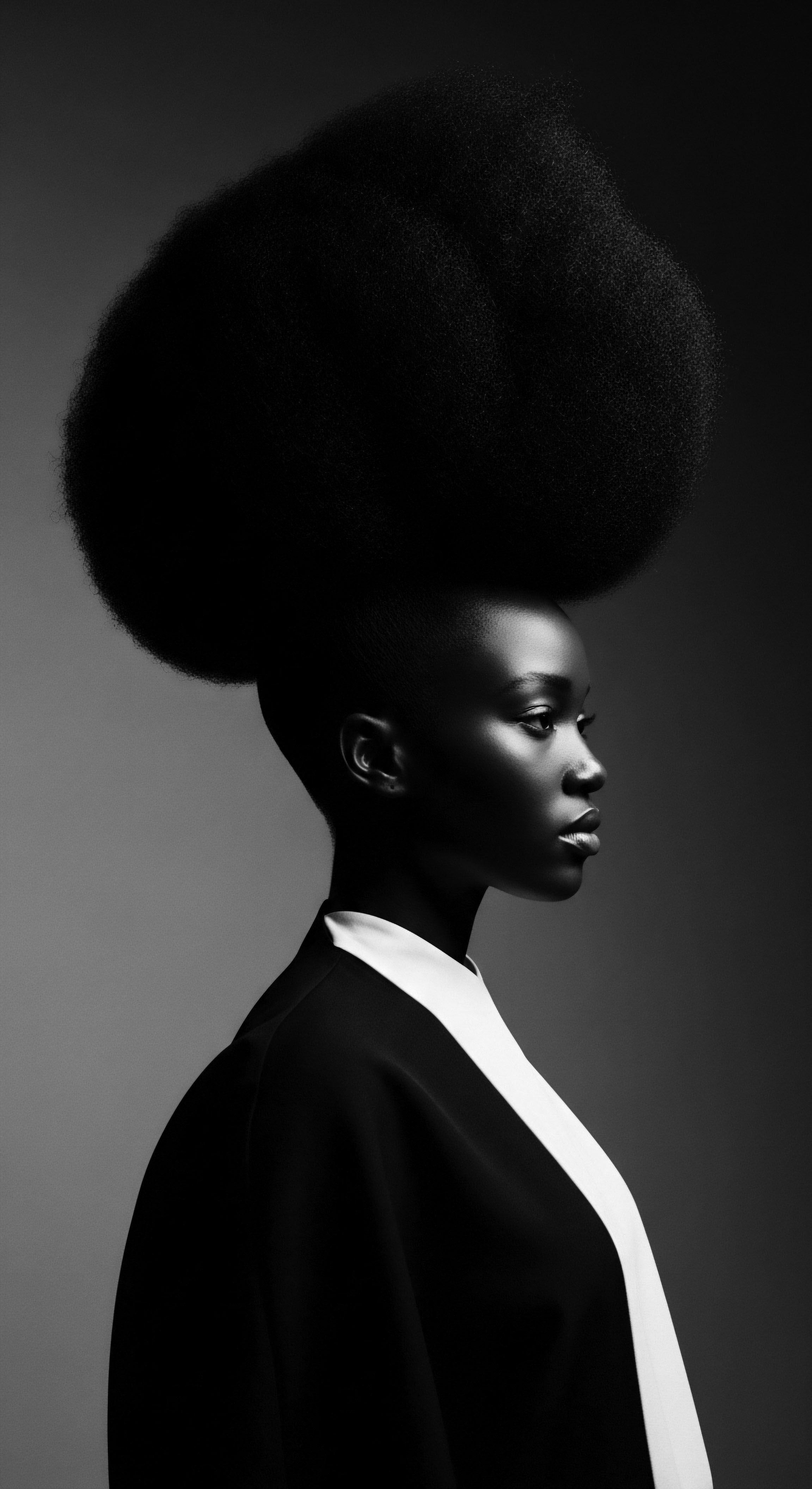
What Happens At The Microscopic Level?
The hot comb’s thermal embrace, while visually transformative, initiated deeper shifts within the hair’s structure. The cuticle, typically robust, could experience lifting or even fracturing under repeated, high-heat exposure. This made the delicate cortex more vulnerable to moisture loss and environmental stressors. The hair’s natural elasticity , its ability to stretch and return to its original shape, could diminish, leaving it more brittle and prone to breakage.
Research into the impact of thermal styling tools on textured hair consistently points to these changes. For instance, a study by Khumalo, et al. (2010) observed that excessive heat could lead to “cortex damage” and “cuticle detachment,” particularly significant for highly coiled hair which already presents a unique challenge in maintaining cuticle integrity due to its inherent turns and twists. This wasn’t merely a cosmetic alteration; it was a physical renegotiation of the hair’s inherent design, a trade-off that often prioritized temporary smoothness over long-term structural health, a challenge deeply felt within communities who sought the appearance of straightened hair.
The hot comb reshaped textured hair by breaking and reforming hydrogen bonds, causing temporary straightening, but risking cuticle damage and reduced elasticity over time.
The choice to use a hot comb, therefore, was never a simple one. It was a navigation of perceived beauty, social acceptance, and the practicalities of haircare. Many found freedom in its use, a sense of agency in their presentation.
Others bore witness to the subtle yet cumulative toll it took, the gradual change in their hair’s responsiveness, its softness, its vibrancy. The ritual of the hot comb became a mirror, reflecting both the aspirations and the concessions of a community striving for self-definition in a complex world.
- Hydrogen Bonds ❉ These are weak bonds within the keratin structure that are easily broken by water and heat, allowing the hair to temporarily change shape.
- Disulfide Bonds ❉ Stronger, permanent chemical bonds that give hair its inherent curl pattern. While hot combs do not break these bonds (unlike chemical relaxers), repeated tension and high heat can stress the hair, affecting its overall integrity.
- Cuticle Integrity ❉ The outermost layer of the hair, vital for protection. Excessive heat can lift or damage these scales, leaving the hair vulnerable and leading to frizz or breakage.

Relay
The story of the hot comb’s relationship with textured hair is a relay race across generations, each hand-off carrying insights, challenges, and evolving understandings. The knowledge, both scientific and anecdotal, concerning its effects has been passed down, shaping how Black and mixed-race communities approach hair care and identity today. This relay, from the warmth of a grandmother’s kitchen to the discourse of contemporary hair science, defines a significant chapter in our collective hair heritage.

Ancestral Wisdom and the Body’s Language?
The scientific explanation of hydrogen bond manipulation and cuticle damage only begins to address the full spectrum of the hot comb’s impact. Ancestral wisdom, often communicated through observation and embodied experience, recognized the hair’s language. Long before molecular biology offered explanations, the subtle signs of heat-induced alteration were felt ❉ a diminished bounce, a drier feel, a more fragile strand. This inherent wisdom led to counter-practices—the generous application of rich oils, butters, and hair greases before and after hot combing.
These were not just for shine; they were protective balms, attempting to insulate the hair from the heat and replenish the moisture lost in the process. Think of ancestral ingredients like Shea Butter, Coconut Oil, or various herbal infusions, passed down as protective elixirs. This preventative care, born of necessity and deep hair knowledge, speaks volumes about an intuitive grasp of the hair’s needs when subjected to such thermal forces, long before the terms ‘heat protectant’ or ’emollient’ entered common parlance. The act of “greasing” the scalp and hair, a common practice, was a fundamental part of the hot comb ritual, a testament to an understanding that heat, while offering aesthetic versatility, demanded meticulous care in return.
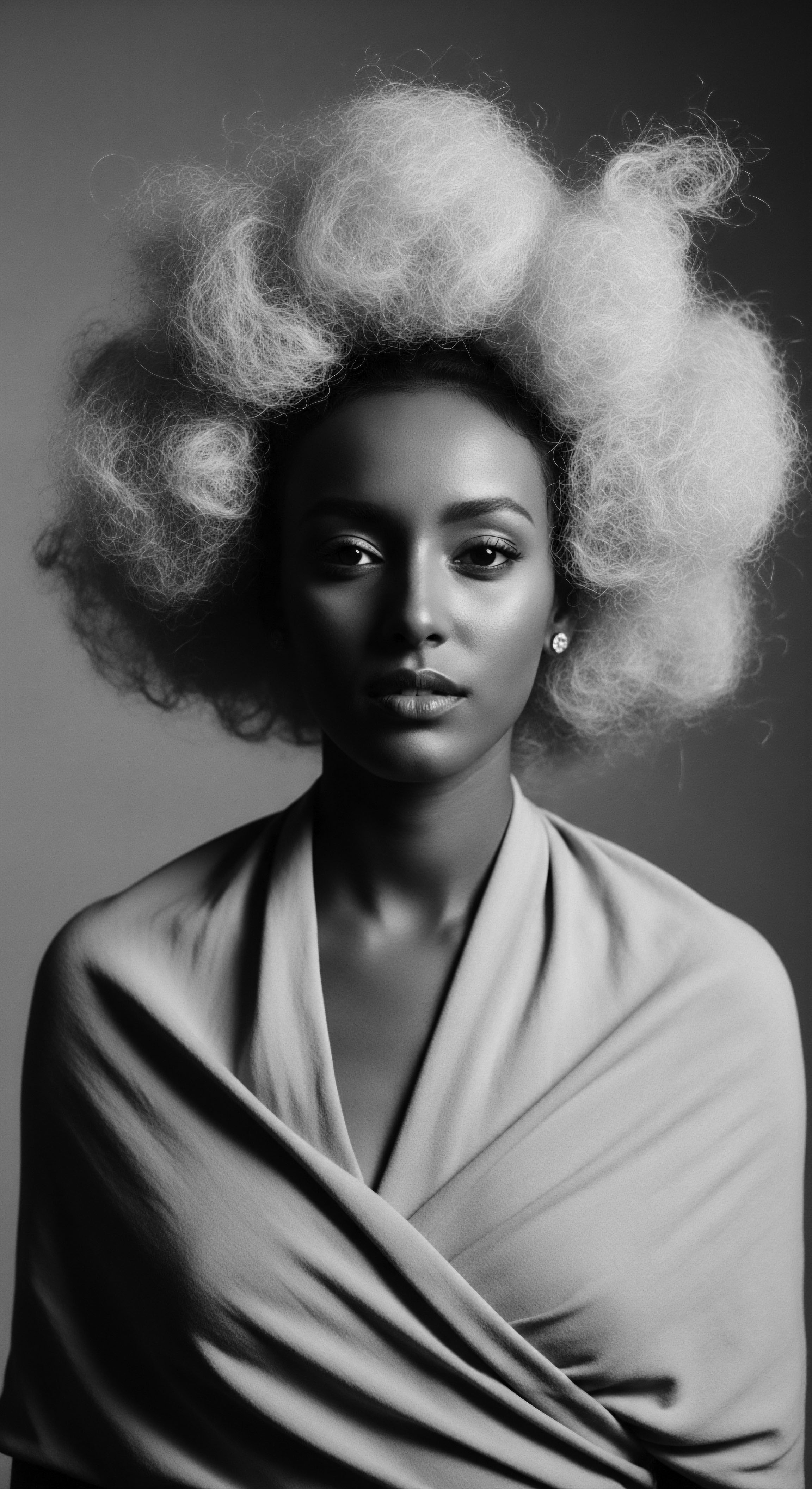
How Did Societal Norms Shift Hair’s Molecular Structure?
Beyond the biophysical changes, the hot comb’s widespread adoption cannot be isolated from the prevailing societal norms. In the early 20th century, particularly within the African American community, straightened hair became increasingly intertwined with perceptions of respectability, professionalism, and assimilation. This pressure, often subtle but pervasive, pushed many to conform to Eurocentric beauty standards. The structural alteration of hair, therefore, became a tool in a larger social negotiation.
While the hot comb offered an alternative to the more chemically harsh lye-based relaxers, its continuous application could still lead to cumulative changes in the hair’s structure, rendering it more prone to breakage and thinning over time. This continuous thermal stress, even if it didn’t break disulfide bonds, could weaken the hair’s overall tensile strength and compromise the integrity of the cortex, a phenomenon often described as “heat damage” in contemporary discourse. The very act of regularly applying intense heat, driven by external pressures, meant a constant challenge to the hair’s inherent resilience. The hair, in its pursuit of acceptance, bore the physical markers of this struggle. This historical context illuminates the profound connection between cultural pressures and the very physical alterations experienced by textured hair.
The hot comb’s popular use, driven by assimilation pressures, resulted in cumulative structural alterations like reduced tensile strength and ongoing moisture loss.
Consider the broader cultural landscape ❉ a straight hairstyle often symbolized access, opportunity, and acceptance in environments that were frequently hostile to natural Black expressions. For many, the hot comb was not just a styling tool, but a means of survival, a way to navigate a world that preferred a different texture. This deep-seated connection to identity and belonging shaped its continuous application, forging a legacy that still resonates today. The physical impact on hair was thus inextricably linked to the social environment in which it was used.
- Madam C.J. Walker ❉ A pioneering entrepreneur who popularized hair care products and the hot comb as part of a regimen to improve hair health and manageability, recognizing the demand for straightened styles within the Black community (Bundles, 2001). Her work, while empowering in its economic aspect, also cemented the hot comb’s place in hair care rituals.
- The “Kitchen” Press ❉ A term referring to the hair at the nape of the neck, which often reverted quickly to its natural texture after straightening. This persistent reversion highlighted the temporary nature of hot comb alterations on deeply coiled hair, a constant reminder of the hair’s innate structure.
- Hair Greasing Practices ❉ The use of heavy pomades and oils, common during hot comb use, was an attempt to protect hair from heat and add shine. While some products provided a barrier, repeated high heat could still cause thermal degradation, challenging the hair’s internal architecture.

Reflection
The journey of the hot comb, from its historical prominence to its place in the modern hair dialogue, reveals more than simply a tool’s effect on hair. It is a meditation on textured hair itself, an ongoing narrative that speaks to the spirit of adaptation, expression, and unwavering self-discovery. Our strands hold memories—of heat, of oils, of communal gatherings, of whispered advice from aunties and grandmothers. They bear witness to a heritage rich with both challenge and ingenuity.
In understanding how hot combs altered textured hair’s structure, we are not merely dissecting a scientific process; we are tracing the lines of a cultural story, one that shapes our present and guides our future. Each curl, each wave, each twist carries within it the soul of a strand, a testament to resilience and an invitation to honor the myriad forms of beauty that have always existed within us. This ongoing conversation about our hair, its history, and its care, forms a living, breathing archive, perpetually being written by those who choose to understand and cherish their unique hair journey.
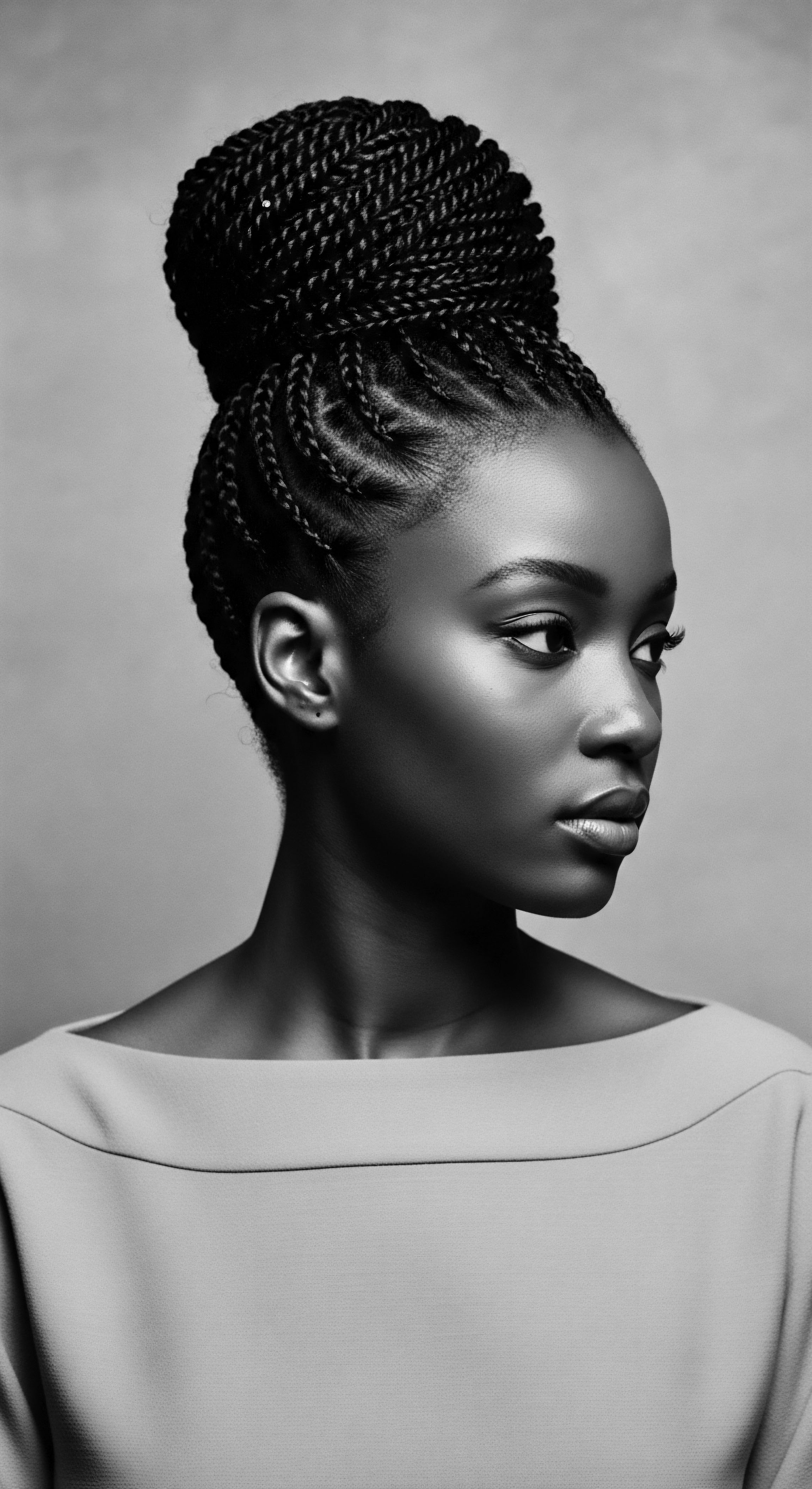
References
- Khumalo, N. P. Doe, P. T. Purba, B. S. & Ngwanya, M. (2010). What causes scalp tenderness to braiding and dreadlocks? Clinical and Experimental Dermatology, 35(6), e1-e4.
- Bundles, A. (2001). On Her Own Ground ❉ The Life and Times of Madam C. J. Walker. Scribner.
